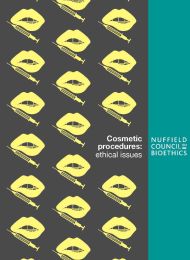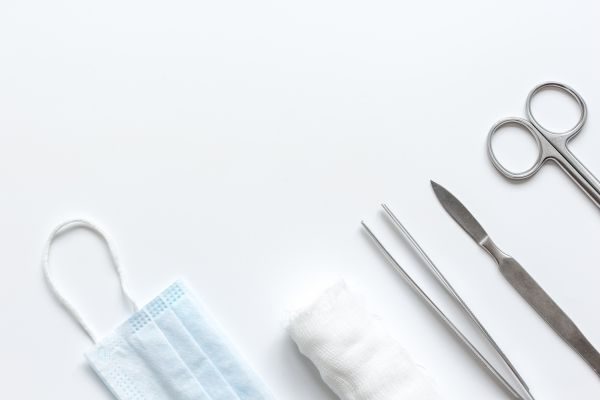Cosmetic procedures: ethical issues
Report
Published 22/06/2017

What counts as a ‘cosmetic procedure’?
It is very hard to draw clear and consistent dividing lines between ‘cosmetic’ procedures, routine beauty practices, and some medical procedures. Sometimes the same procedure can be either ‘cosmetic’ or ‘medical’: for example a woman may have a breast reduction to reduce back pain, or for appearance-related reasons (or both).
This report uses ‘cosmetic procedures’ as an umbrella term to cover invasive, non-reconstructive procedures that:
- aim to change a person’s appearance primarily for aesthetic, rather than functional, reasons;
- are carried out by third parties in a medical environment, or in an environment that ‘feels’ medical (such as a medi-spa); and
- are not ordinarily publicly funded through public health systems such as the NHS.
Such procedures include cosmetic surgery and dentistry, as well as nonsurgical interventions.
- Surgical procedures include
- Eyelid surgery
- Cheek and chin reshaping
- Facelifts
- Ear reshaping or repositioning
- Nose reshaping (rhinoplasty)
- Breast enlargement, reduction and uplift
- ‘Tummy tuck’ (abdominoplasty)
- Buttock implants
- Genital cosmetic surgeries
- Liposuction and lipomodelling (transferring fat from one area of the body to another)
Non-surgical procedures include:
- Dermal fillers (to fill-out wrinkles and skin creases and to plump lips)
- Laser or Intense Pulsed Light (IPL) hair removal
- Invasive skin-lightening procedures
- Botulinum toxins (‘botox’)
- Chemical skin peels
- Microneedling (puncturing the skin to promote a wound-healing response and treat skin damage)
- Hair restoration and transplant
- Cosmetic dental procedures, including teeth whitening

Share